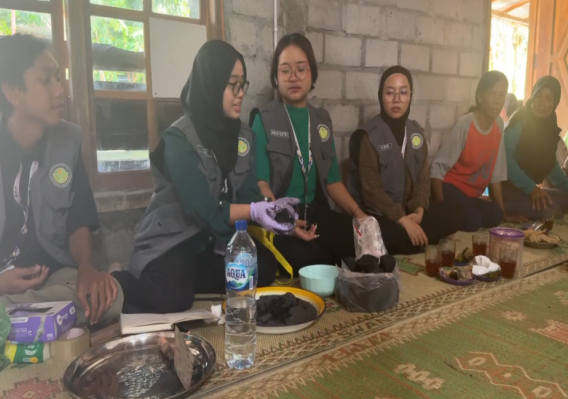UNY KKN Students at Dusun Praon Teach the Making of Briquettes from Rice Straw

Students from the Community Service Program (KKN) group 11200 at UNY, stationed in Dusun Praon, Kalurahan Pulutan, Wonosari, Gunungkidul, carried out a community‐empowerment program focused on the use of agricultural waste. Through this activity, they taught local residents how to make environmentally‐friendly briquettes made from rice straw and tapioca flour.
Ten KKN students (Berliana Dwi Lestari; Aqheela Aphrodita Zainfa; Destri Amalia Widodo; Khairunissa Shabrina; Muhammad Izzudin Al Azzam; Nur Haliza Triyana; Rifka Yunanda; Riko Alif Utama; Satria Bagus Rhyan Dhyta; and others) collaborated with residents to harness a local potential that had not been optimally utilised — namely rice straw which was often simply burned after harvest.
According to the team leader Muhammad Izzudin Al Azzam, the main goal of the program was to increase the added value of rice straw which had been considered waste. By processing it into briquettes, rice straw can become an alternative energy source that is cheaper, easy to make, and environmentally friendly. “In addition, briquettes can become a solution to reduce the community’s dependence on firewood and LPG gas whose prices often fluctuate,” he said.
The production process was guided by Destri Amalia Widodo and Rifka Yunanda, who explained the steps in simple language so the residents could easily understand. According to Destri, the steps include: drying the rice straw by cutting it into small pieces and sun-drying until fully dry; then carbonising it (partial burning) to create rice straw charcoal; then grinding it into fine powder. Meanwhile, tapioca flour is cooked with water until thickened, then mixed with the rice straw charcoal powder. The mixture is then shaped into squares using a wooden mould of appropriate size. The formed briquettes are then sun-dried until completely dry and hard before use.
Rifka Yunanda explained that the rice-straw briquettes have several advantages compared to ordinary charcoal. The briquettes produce more stable heat, emit less smoke, do not smell, and do not easily disintegrate. “In addition, briquettes are relatively more durable, easier to store, and do not break apart quickly,” she explained. These advantages make the briquettes more practical and environmentally friendly, thus offering a promising alternative energy source for the future.
The residents of Dusun Praon showed strong enthusiasm, participating directly in the entire process, from preparing rice straw to trying the briquette produced in the training. The residents admitted they were pleased with the training, as they gained new skills that they could apply in daily life, for example for cooking or warming water. Some residents even viewed that making briquettes could be developed into a home business to boost household income.
Meanwhile, the KKN UNY students hope the training will not stop at the practical level alone but can continue to be developed by the community. If sustainably managed, rice-straw briquette production could not only benefit household energy needs but also be marketed to other villages with similar needs.
Through this activity, the students commit to supporting the creation of an energy‐independent village based on local potential. This simple yet practical program is expected to make a real impact in reducing dependence on fossil fuels while also addressing agricultural waste problems in rural areas.






